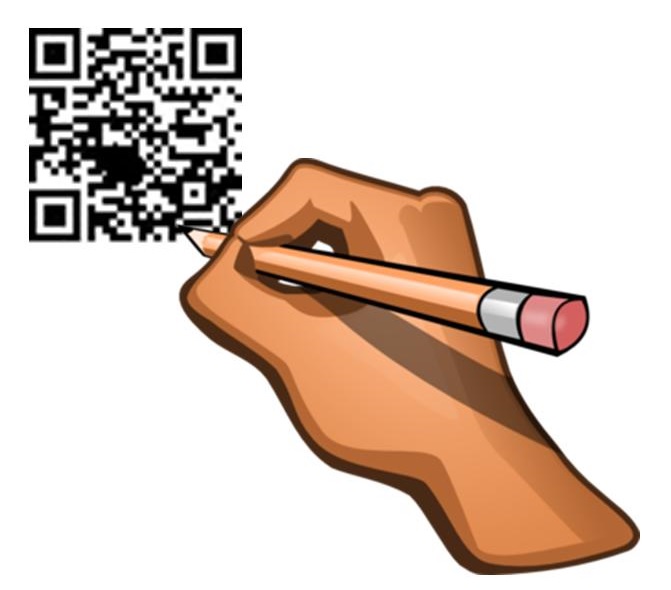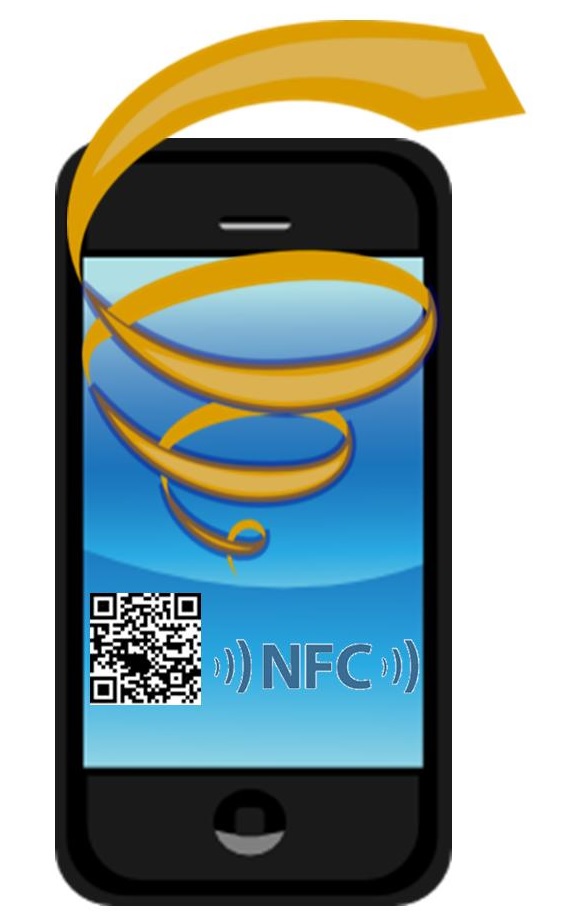The latest technology news from the arena of quick response codes is that they are getting easier to generate.
Mobile marketers have adored the opportunity that QR codes have had to offer, using them on everything from product packaging to magazine ads, but these are barcodes that have traditionally been generated by computers.
However, MIT Media Lab researchers are now making it possible to use graffiti for the exact same purpose.
These graffiti QR codes would allow a hand drawn barcode, created on virtually any surface, to be converted into a scannable and readable image that smartphone users could turn into a much broader amount of content. In order to achieve this goal, the researchers had to change the way that the barcodes would be read in the first place.
Traditional QR codes are scanned using a barcode reading app that snaps an image of the black and white square.
 With the new graffiti style of QR codes, the user would simply move the smartphone over the path in order to access the content to which it is linked. The accelerometer in the device is able to detect the pattern of the movement and is then able to load the content to which that particular path is connected.
With the new graffiti style of QR codes, the user would simply move the smartphone over the path in order to access the content to which it is linked. The accelerometer in the device is able to detect the pattern of the movement and is then able to load the content to which that particular path is connected.
As the method uses only the smartphone’s movement in order to read the barcode, instead of actually scanning the QR codes themselves, it means that the shape would no longer be limited to a pixilated square. Instead, the barcode can be drawn using any kind of material and onto any type of surface.
Possible uses, for example, are that a graffiti QR code could inform the smartphone user regarding what the art represents, who created it, what materials were used, and other relevant and interesting information.
One of the Media Lab’s Viral Spaces group members, Jeremy Rubin, said that there is a great deal more potential to these QR codes. For example, it could provide the opportunity to share relevant content to the smartphones of consumers while they are taking part at a certain activity within a location. For example, while riding an escalator up to the next floor of a store, it could provide information regarding what they are about to see and what products are located on the next level.
These techniques are primary behind driving Google billboard consumer engagement.
Google Play has released a new advertising campaign to boost mobile commerce from Android users, employing both QR codes and NFC technology to help to engage with consumers and encourage them to interact with billboard content using nontraditional techniques.
The campaign has been focused on consumers in various parts of Australia.
It was launched by oOh! Media and created mobile commerce connected billboards at the domestic airports located in Melbourne, Sydney, and Brisbane. They allow smartphone carrying travelers to be able to interact with content that is presented to them on digital billboards. They can then pay to download content onto their android smartphones using the free Wi-Fi within the airport, provided by oOh!
The mobile commerce purchase can be activated using either a QR code scan or an NFC tag tap.
 Once the mobile commerce transaction is complete, the desired content appears on the screen of the Android based device that was used to buy it. For instance, shoppers may spot a book that they would like to read while viewing one of the Google Play billboard ads in the airport while they are waiting for their flight. They can simply scan a QR code to head directly to the download screen for that digital product and it will be sent immediately to their device.
Once the mobile commerce transaction is complete, the desired content appears on the screen of the Android based device that was used to buy it. For instance, shoppers may spot a book that they would like to read while viewing one of the Google Play billboard ads in the airport while they are waiting for their flight. They can simply scan a QR code to head directly to the download screen for that digital product and it will be sent immediately to their device.
According to the Google Account communications planning director, Jenn Brown, PhD, “We wanted the campaign to be rewarding, interactive and truly mobile. We wanted this to be at a moment where consumption of entertainment content was top of mind and the airport environment delivered on all of these elements.”
Brown went on to say that the mobile commerce campaign has already managed to bring about more than 2000 interactions, which is considerably greater than any of the “trial” NFC campaign and oOh! campaign engagement metrics that have been achieved worldwide.
The group director of oOh! business strategy, Warwick Denby, explained that this is a first, worldwide, and that it is a prime example of how mobile commerce and billboard displays are very compatible with one another. It also illustrates, said Denby, how smartphones are able to “drive engagement and enable consumers to connect and transact with the brand online – immediately.”
 With the new graffiti style of QR codes, the user would simply move the smartphone over the path in order to access the content to which it is linked. The accelerometer in the device is able to detect the pattern of the movement and is then able to load the content to which that particular path is connected.
With the new graffiti style of QR codes, the user would simply move the smartphone over the path in order to access the content to which it is linked. The accelerometer in the device is able to detect the pattern of the movement and is then able to load the content to which that particular path is connected.
 Once the mobile commerce transaction is complete, the desired content appears on the screen of the Android based device that was used to buy it. For instance, shoppers may spot a book that they would like to read while viewing one of the Google Play billboard ads in the airport while they are waiting for their flight. They can simply scan a QR code to head directly to the download screen for that digital product and it will be sent immediately to their device.
Once the mobile commerce transaction is complete, the desired content appears on the screen of the Android based device that was used to buy it. For instance, shoppers may spot a book that they would like to read while viewing one of the Google Play billboard ads in the airport while they are waiting for their flight. They can simply scan a QR code to head directly to the download screen for that digital product and it will be sent immediately to their device.